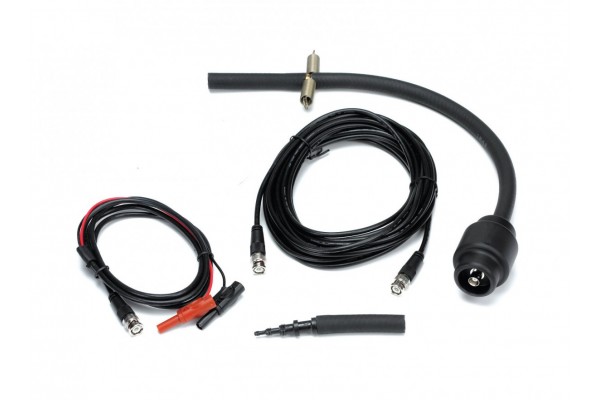Sensor de Exaustão para Diagnóstico de Motor Pico FirstLook TA014
Preço sob consulta
The FirstLook Engine Diagnostic Sensor offers a fast and accurate method to diagnose automotive engine problems such as burnt valves, bad injectors and other performance problems without major disassembly of the engine.
When connected to the exhaust or vacuum side of the engine to be tested the FirstLook engine diagnostic sensors enables a mechanic to quickly display a complete picture of core engine performance on a suitable digital storage lab scope.
The FirstLook sensor requires no external power source and is particularly suitable for use with a PicoScope automotive oscilloscope but can also be used with most other modern lab scopes.
How does it work
The FirstLook sensor looks at the pulse waves generated by the normal operation of an internal combustion engine. All engines produce a predictable pattern of these pulses and so any change or irregularity in the pulse wave can be traced back to problems in the engine. The pulse wave can also be affected by unburned fuel in the exhaust and this abnormality is also detected and displayed.
In typical use the FirstLook sensor is either placed in the exhaust pipe or attached to a vacuum port where it detects the air stream pulse waves. When connected to a suitable dual trace oscilloscope the display shows in real time the valve, cylinder and injector activity in any two or four stroke, gasoline or diesel internal combustion engine. By displaying timing triggers on the scope, observed malfunctions may be pinpointed to specific cylinders. The ability to identify the specific cylinders where valve or injector problems are occurring greatly reduces the time and expense required to diagnose engine problems.
Examples of waveforms captured using the sensor are available at the Pico Library of Automotive Waveforms.
Kit contents
The FirstLook Engine Diagnostic Sensor kit comprises of the following items:-
- FirstLook Diagnostic Sensor
- 25 foot cable - BNC to BNC cable
- 45 inch cable - BNC to banana jack plugs
- BNC to BNC adaptor
- Vacuum line adaptor
User's Guide
Quick Start Guide
Four Cycle Engine Timing Chart








